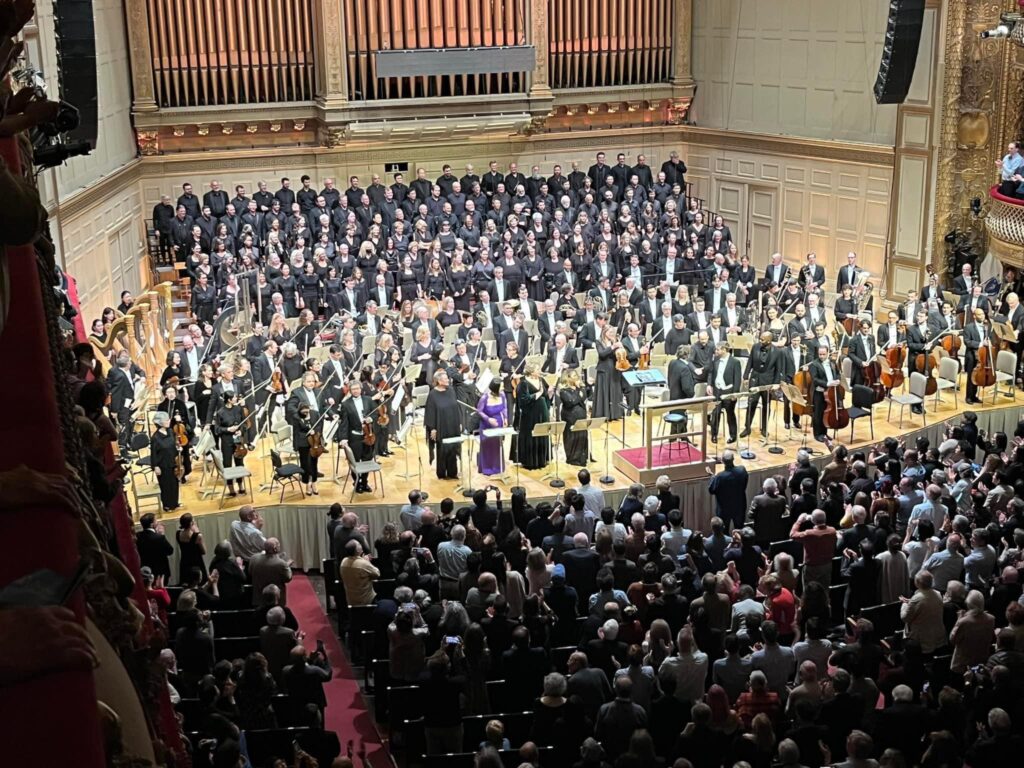
We’re doing Mahler’s 8th Symphony this weekend. It’s the first time for me since 2015 and only the second since I joined the Tanglewood Festival Chorus 19 years ago. (I wrote about that experience performing with James Levine, the late great Johan Botha, Deborah Voigt, and Heidi Grant Murphy (the soprano in the rafters) among others, at the time.)
The work remains galactic in its scope and stentorian in its volume. (We have a little grassroots decibel reading practice among the choristers; last night reached “only” 106 from my position on the fifth bench, and we’ve hit as high as 108 in rehearsal.) But it feels different. For one thing, years of in-rehearsal vocal coaching from the TFC’s music director James Burton have made it much easier to sing properly, and “bloomin’ loud” as he’s said on at least one occasion, without screaming. Which is a skill you need if you’re going to be hitting those decibels.
For another, I’m an experienced hand now. While I won’t have a special marking next to my name in the program book until I complete this year plus five more, there are far fewer in the chorus who have a double digit tenure than when I started.
And so, it felt appropriate to mark this weekend’s performances, again, with a special cocktail. As I did for Mahler’s Second, I took inspiration from the text. While it was tempting to just go with the memorable text from Part II’s opening (“Waldung, sie schwankt heran/Felsen, sie lasten dran/Wurzeln, sie klammern an/Stamm dicht an Stamm hinan/Woge nach Woge spritzt…”) and make a “spritzt,” that didn’t feel sufficiently … impactful for a piece that featured two full choirs and boys’ choir, offstage brass, eight soloists, four harps, a harmonium, a pipe organ, and two mandolins. (There were around 300 of us on stage last night.)
So I went with the opening text instead, and made a “Veni Creator Spiritous.” (Groan.) The jumping off point was a Sazerac, but I switched everything up while keeping the overall slightly boozy affect… and, as with the Aufersteh’n, made sure to include herbal liqueurs in honor of Mahler’s vegetarianism.
As always, you can import the recipe card photo into Highball. Enjoy!

